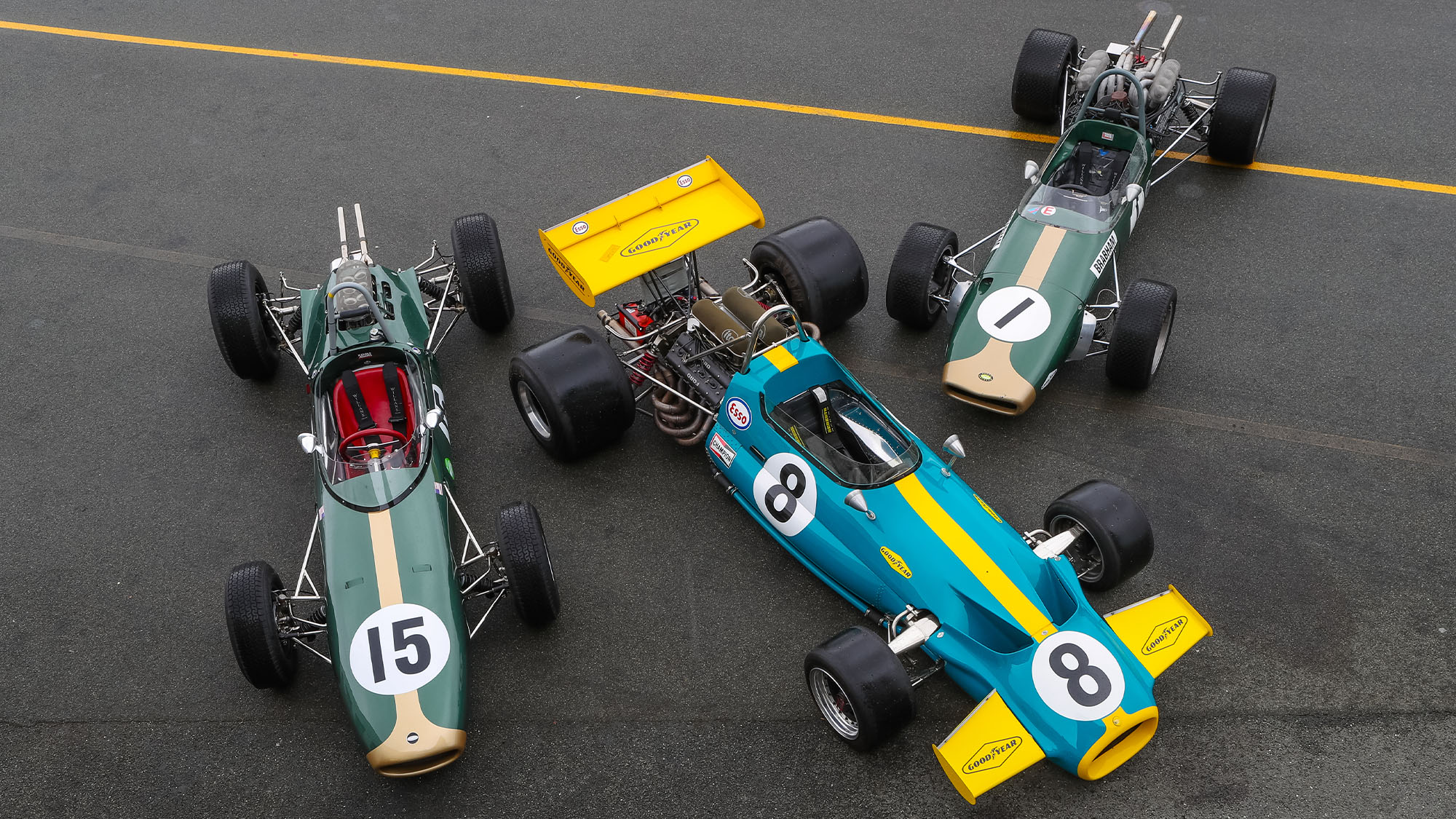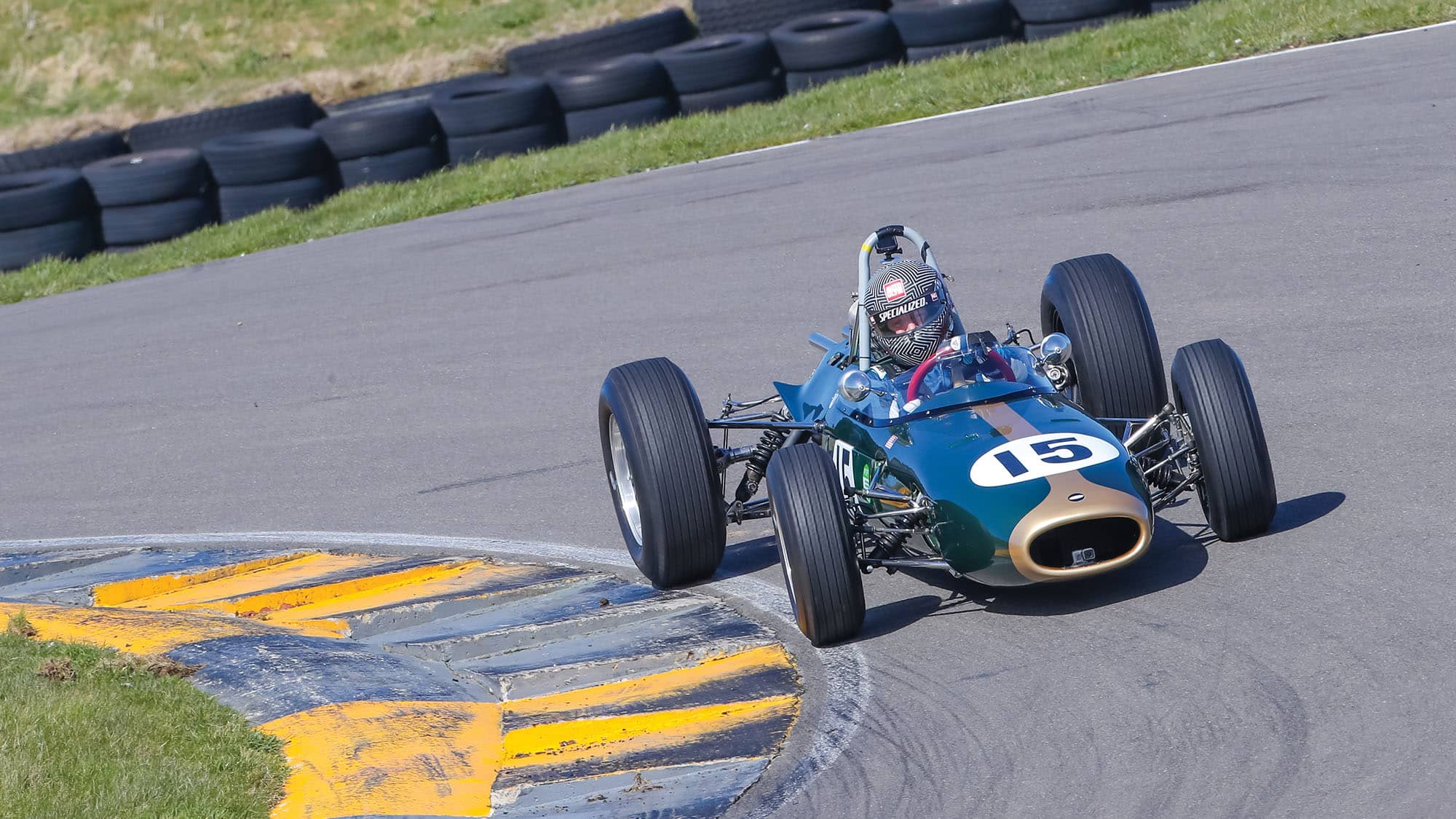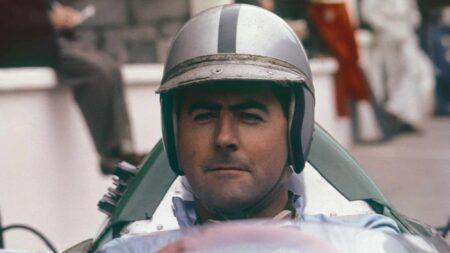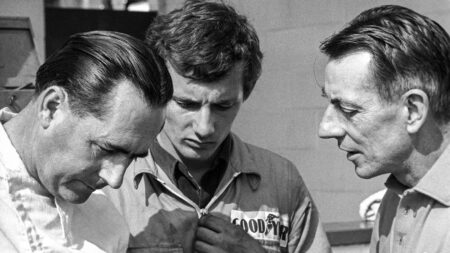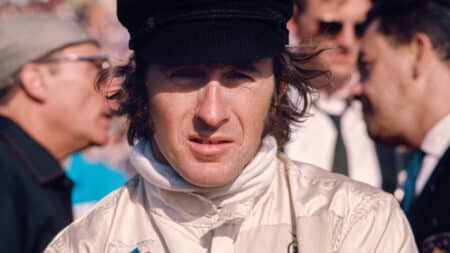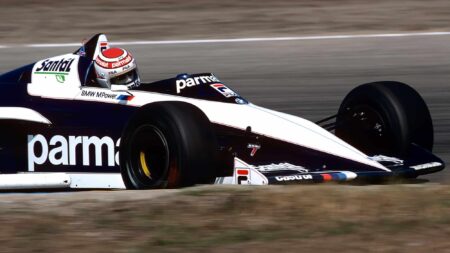Lotus might have introduced the monocoque chassis in 1962, but for most teams tubular spaceframes were still the order of the day in 1963. The BT7 was no exception and followed Brabham and Ron Tauranac’s philosophy of building simple, sturdy cars, though in the context of 2018 the featherlight BT7’s chassis looks as though it has been spun from gossamer.
The BT7 has a somewhat spidery stance, its slender thorax slung low between a cradle of spindly suspension wishbones and supported by a tall treaded tyre at each corner. Sitting in the cockpit you feel vulnerable and exposed with the upper half of your torso visible through the flanks of the wraparound Perspex screen. Look at pictures of Gurney in F1-1-63 and his head is so far above the roll hoop it’s laughable.
The Coventry-Climax V8 is a raucous, waspish engine, its holler belying its diminutive capacity. King, who still regularly races the car, revs it to 9000rpm (about 500 down on its in-period maximum), but we’ve agreed not to exceed 8000 in the first three gears and no more than 8500 in the remaining two, so as to leave some margin and save its best for King’s appearance in this year’s Monaco Historic GP.
With approximately 190bhp and a little under 120lb ft of torque, its vital stats are modest compared to modern outputs, and with the BT7 weighing just 475kg it makes every horsepower count. There’s a delicious energy and lack of inertia to the way it makes progress that’s quite unlike any other racing car I’ve driven. And the steering? Well, it’s so light and communicative you immediately see why wrists and forearms are all you need to guide it.
On a cold, wet track there’s a disconcerting lack of grip, which coupled to the lightness of the controls means you feel robbed of the reference points you crave to deduce how much you can lean on the tyres and to what degree you can squeeze on the throttle or brakes. Finesse is clearly the key, but knowing and doing are two very different things. It’s not until the track has dried and I head out for another run that I feel confident enough to bring the BT7 to life.
Once those tyres find some purchase it’s truly glorious. It has grip and traction, but of a fluid, almost elastic nature. One that will stretch if you work it sympathetically, but snap if you hammer the brakes, bully the front end or stomp on the throttle. When it slides it does so quickly, and it’s easy to lock a front wheel. The modest slip angles and steely serenity you see on the faces of Brabham, Clark and Gurney are a reflection of those precisely measured inputs and maximum commitment.
BT24
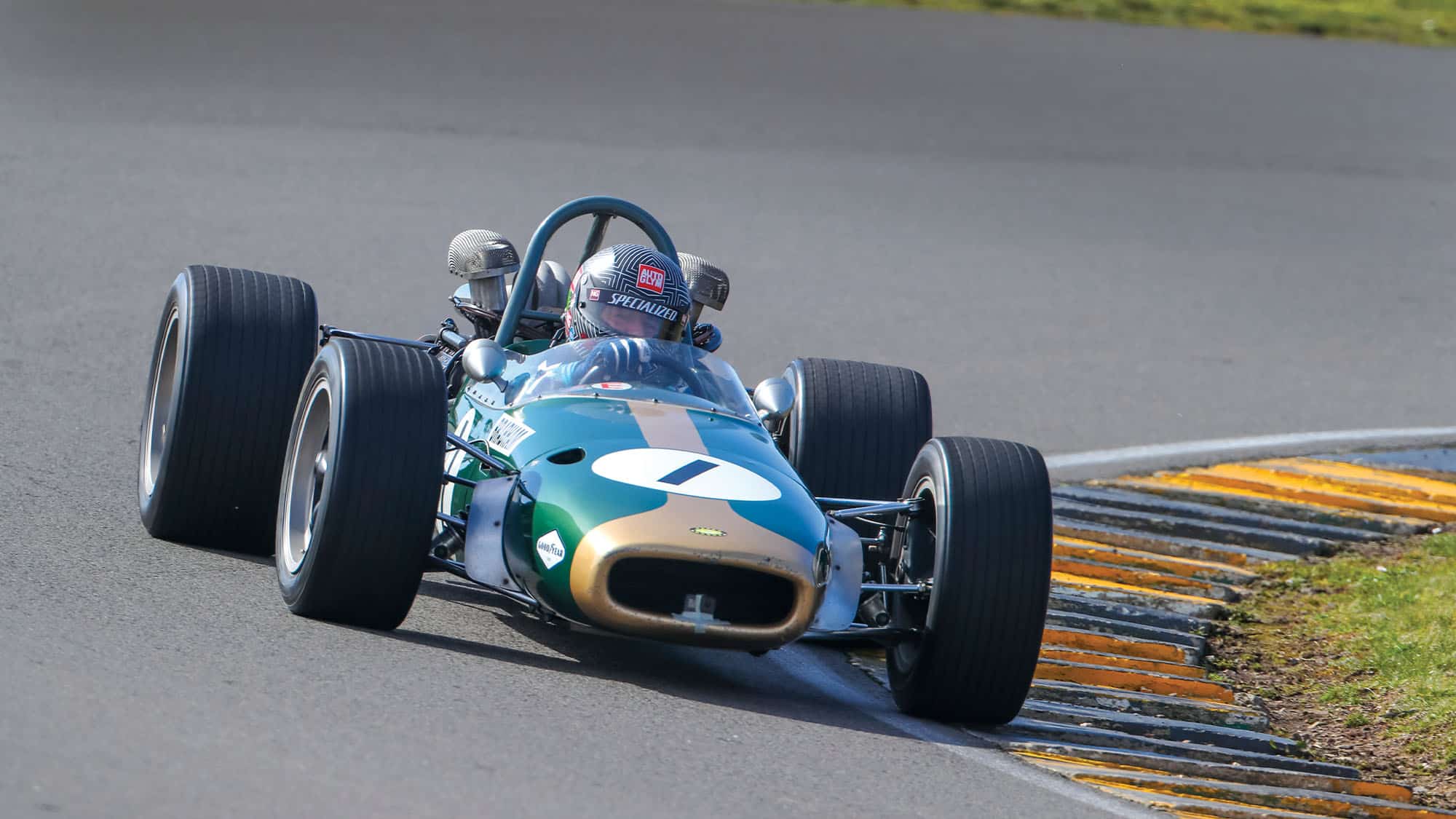
Brabham’s deal with Repco saw him well placed 3-litre era: BT24 is a larger, more solid car to handle the power increase
Lyndon McNeil
If you’re going to ‘be’ Jack Brabham, the place to do it is the cockpit of a Brabham BT24-Repco. This car is actually a faithful reproduction rather than the real McCoy, built more than 20 years ago and featuring many Brabham components. Crucially it has Repco’s bellowing V8, so the experience is about as authentic is it gets.
The BT24 was the first Brabham built specifically for F1’s new 3-litre formula (rather than the one-off BT19, which was originally designed for the 1.5-litre formula then adapted). Nicknamed ‘Old Nail’, the BT19 took Brabham to his third championship and the first in his own car.
Although its origins were humble, the Repco V8 was both light and – crucially – reliable when compared with the complex V12 and H16 motors fielded by the less pragmatic opposition. The same was true in 1967 with the new BT24, Brabham and team-mate Denny Hulme stealing a march on their rivals to secure a world title double for Brabham and Hulme.
Immediately you sit in the BT24 you can sense it’s a more serious car. There’s a bit more space in the cockpit, so you feel less confined, while the view out front and in your mirrors is dominated by those fat, square-shouldered tyres. It’s like a BT7 that’s been lifting weights and drinking protein shakes.
